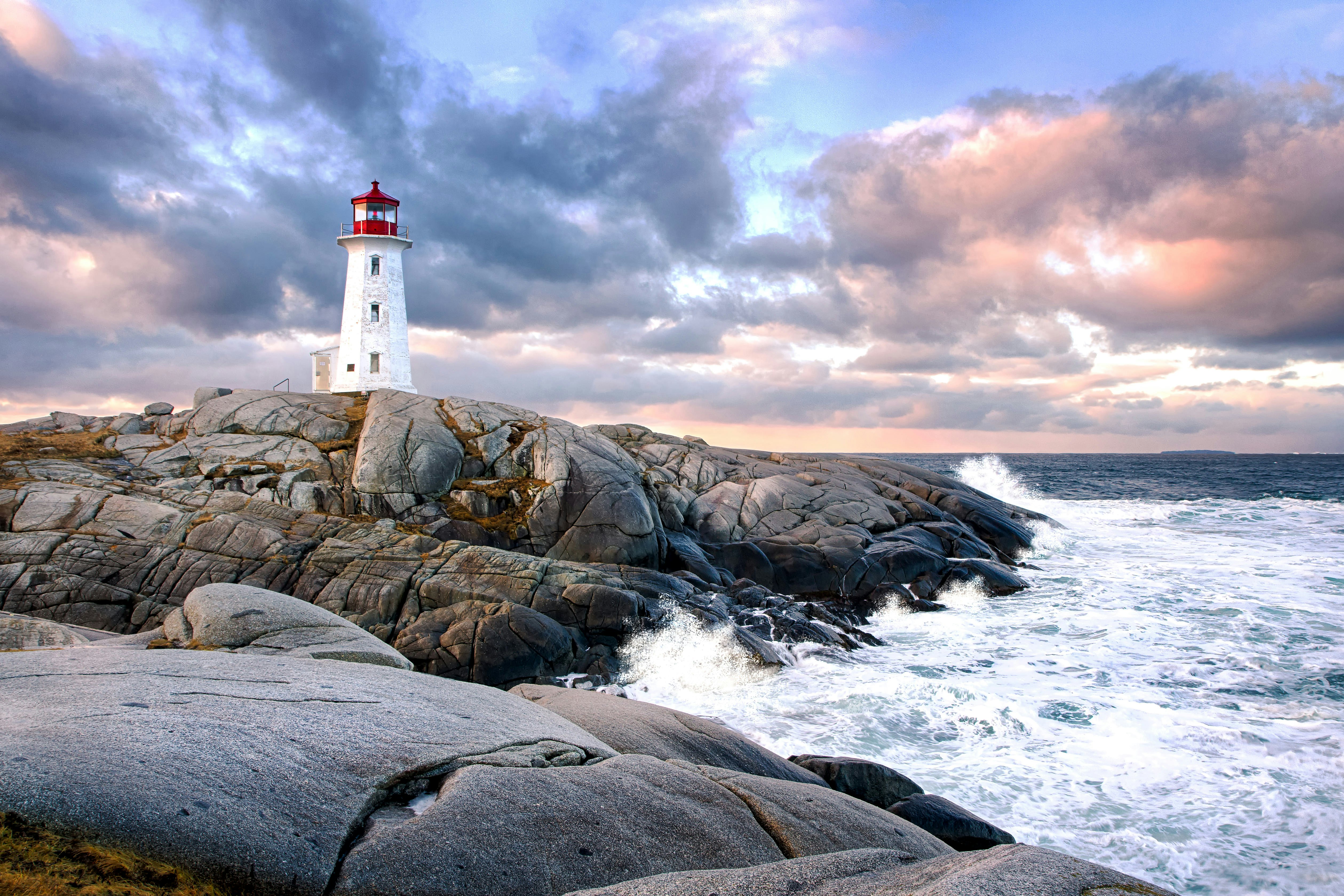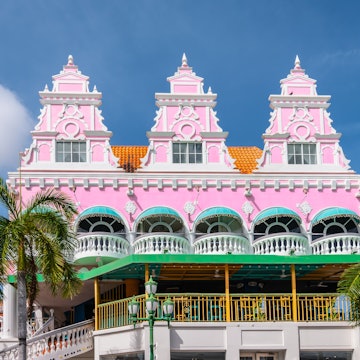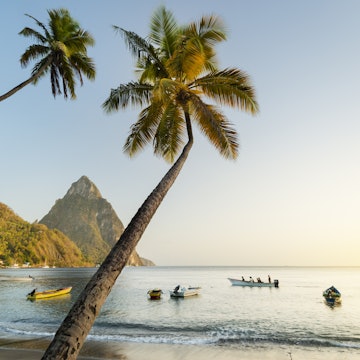

Boats at the harbor in Halifax, Nova Scotia. J Duquette/Shutterstock
As a born and bred Nova Scotian and a one-time tourism promoter, I’ve been welcoming and advising visitors for decades.
This is my home and my playground, and I never tire of exploring Nova Scotia’s nooks and crannies. There’s always a new winery or restaurant, a kayaking tour or an Indigenous experience to renew my appreciation of the home I thought I knew.
The good news is that my fellow Nova Scotians are just as eager to receive visitors. On a whale-watching tour, the captain will invite you into the wheelhouse for a yarn. It’s their fishing boat – they're eager to show it off. At a winery, the vintner is more than happy to talk about varietals and the organic approaches to growing them. Inside a rural museum, an interpreter might invite you to help fit that next board onto the dory they're building. Their great-grandparents might have built similar boats here.
Nova Scotia is very safe, but more than that, its people are ready to welcome visitors with open arms, a glass of wine and a tale or two, some of which might even be true. Get the most out of your trip to Nova Scotia with these things to know before you go.

Planning for your trip to Nova Scotia
1. Plan to spend at least three days in Nova Scotia
A common misconception among visitors to Nova Scotia is that it’s drivable in a single day. While technically true – a one-way trip tip-to-tip takes 8 hours – you’ll want to immerse yourself in its rural charms and urban panache. Get off the 100-series highways onto the rural routes and scenic drives. Take that side road down to the wharf. When that beach tempts you to pull over and walk it, answer the call.
2. Pack for changeable weather
Casual, comfortable clothing is ubiquitous – lots of denim, plaid, T-shirts, sneakers, sandals. Smart casual for the theater or a nice dinner is as formal as it gets. More importantly, pack layers and a waterproof windbreaker for cool nights, foggy coastlines and rainy days. Winter’s a different story when freezing temperatures require hats, mittens and warm coats.
3. Book accommodations and car rentals well ahead
Especially in summer and near the sea, accommodations fill up months in advance, sometimes a year out. Rental cars are hard to come by in summer, so book one well ahead of arrival.

4. Getting into and around Nova Scotia requires creativity
Everyone needs a passport to enter Canada through Nova Scotia, including Canadians returning from abroad. Citizens of the US and many other countries need only a passport; others need additional documentation.
Maritime Bus serves some parts of Nova Scotia with daily stops. A 2-hour trip costs about 25 Canadian dollars (C$). VIA Rail, the only passenger train, links Halifax and Montréal three times a week. EV charging stations are coming online quickly, but the total number is only around 100. While useful in Halifax, ride-hailing apps won’t likely get you a ride in rural areas. A few taxi services survive in some small towns.
Halifax’s Metro Transit runs a network of efficient, affordable bus routes and the ferry service that makes several harbor crossings per hour. An adult fare for either is C$3. Ask for a paper transfer each time you get off a bus or ferry so you can catch the next one for free. Sydney on Cape Breton Island has its own public transit, but that’s about where services that are useful to visitors end in Nova Scotia.
5. Cellphone options are expensive, so stick with your home plan
Picking up a SIM card upon arrival in Canada won’t land you the savings it does in other countries. Phone plans in Nova Scotia are notoriously expensive. It’s likely cheaper to stick with your own roaming plan.
6. Wi-fi is common and free
Hoping to cut down on expensive data use? Most bars, restaurants and attractions offer free wi-fi. Just ask a server for the password. Need a keyboard? Libraries across Nova Scotia are equipped with computers that are free to use.
7. Debit and credit cards are widely accepted, but take cash to farmers markets
Nova Scotia businesses of all sizes have gone fully electronic. Debit and credit cards are almost universally accepted. Just remember that small businesses have to eat the transaction fees, so debit is better than credit for them, and cash is better than both. Small companies like Wilson’s sell gasoline at a discount when you pay with debit or cash.

8. Canada is in the midst of a reconciliation process with Indigenous peoples
Centuries of mistreatment of Indigenous peoples in Canada by settlers has led to a process called reconciliation. Governments at all levels and Canadians of settler descent are working to address the fallout of that mistreatment. At a musical performance, you’ll likely hear a land acknowledgment that declares the area as the ancestral home of the Mi’kmaq. Visitors are encouraged to seek out the welcoming Mi’kmaq, who offer interpretive experiences such as Eskasoni Cultural Journeys and work as guides in places like Kejimkujik National Park and the Millbrook Cultural and Heritage Centre.
Etiquette in Nova Scotia
1. Tipping is expected
When paying by card, you’ll see a range of percentages pop up. The standard tip at Nova Scotia restaurants is 15%. There's no need to go higher than that, but do remember that many servers are paid minimum wage.
2. Place names can be tricky to get right
Expect strange, hard-to-pronounce place names in Nova Scotia, many with Mi’kmaw, French or Gaelic roots. Nobody in Antigonish is against something called a “gonish,” as one visitor enquired. No one is looking for anything in Ecum Secum. There’s no bumper crop of fungi in Mushaboom. Nova Scotians are known for their healthy sense of humor and will happily help with correct pronunciation. Pronounce Musquodoboit as “mus-ka-dob-it.” When asking how far to Ben Eoin, it helps to think of a sleepy friend named “Ben Yawn.”
3. Practice your French in Acadian communities
In communities of Acadian ancestry such as Cheticamp, Isle Madame, Pubnico and Clare, French is the first language. It’s an older form of the language, influenced by English and Mi’kmaq, the local Indigenous language. Slipping into a conversation with a speaker of Acadian French will make an instant friend, but be prepared for a heavy accent and a hybrid language in which un pickup and un truck à garbage are easily translated terms.
4. Put down that lobster bib
I know, I know. Cracking open and devouring a whole lobster is a messy business, and you don’t want stains on your shirt. But nothing marks a tourist faster than donning the plastic bib decorated with little lobsters that restaurants provide. Be bold. Go local. Dive into that big, red, delicious crustacean with both hands, bib-free.

Safety in Nova Scotia
1. Call 911 in an emergency
That number gets you an ambulance operated by professional paramedics. In rural Nova Scotia, it gets you a first responder, a volunteer with extensive first aid training who can quickly reach the services required for whatever the emergency might be. Medically essential transportation by ambulance can cost over $1000 for tourists, so be sure to have adequate travel insurance and contact your insurance company immediately.
2. Stand well back from breaking waves
If there’s one danger Nova Scotians want every visitor to be aware of, it’s unpredictable coastal waves. At popular sites, waves roll straight in off the Atlantic, gently washing over the rocks one minute and potentially rising up to swallow onlookers at the next. Stay well back from rocky shores where waves break. At Peggy’s Cove, watch the waves from the viewing deck. On beaches, learn how rip tides work and how to escape them.
3. Forget bottled water
All restaurants serve free, safe-to-drink water (usually from the tap) with meals. There’s rarely a need to buy water in plastic bottles.
4. Cannabis is legal but confined to private places
Canada legalized cannabis in 2018. The Nova Scotia Liquor Commission (NSLC) is the province's only legal retailer of cannabis, which is sold in the same stores as beer, wine and spirits. If you’re at least 19 (that’s also the legal drinking age), feel free to use it in the privacy of your accommodations. You can possess up to 30 grams in public, but it’s illegal to use it in most public places and in a vehicle. Don't drive under the influence, and don’t forget it in your suitcase when flying out of Halifax. Otherwise, if you’re one for the weed, enjoy this rare freedom.
















